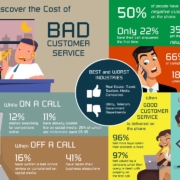FinOps: The Essential Art of Fine-Tuning Cloud Expenditure for Enterprises
In the era of multi-cloud adoption, the stakes have never been higher when it comes to managing and aligning your cloud expenditures.
Embracing cloud services is a breeze, but mastering cloud spending can be problematic for enterprises dedicated to extracting maximum value from their tech investments.
According to Gartner’s latest forecast, global spending on public cloud services is set to skyrocket by 20.7% in 2023, reaching a staggering $591.8 billion. Meanwhile, Foundry’s Cloud Computing Study for 2023 reveals that while reducing total cost of ownership ranks among the top priorities for cloud computing initiatives, reigning in cloud costs is the ultimate hurdle that can either accelerate or derail cloud adoption.
One of Excelien’s clients points out, “The cloud offers unparalleled potential for growth, but costs can quickly spiral out of control.”
Navigating Uncharted Cloud Expenses
Worries about soaring cloud and distributed computing costs often leave organisations with two crucial strategies for cost containment:
- Optimise computing power to minimise expenses while achieving business goals.
- Turn off cloud resources swiftly to save precious budgets.
Excelien experts say, “In the pursuit of speed and customer onboarding, cost efficiency can sometimes take a backseat. Attempting to optimise costs after the fact while simultaneously managing operations and growth can become an uphill battle.”
Unleashing cost-efficiency and unleashing productivity hinges on the ability to meticulously track cloud resource usage, workload execution, and the reasonable deployment of available CPUs.
These factors are central to the evolving realm of FinOps, a fusion of financial wisdom and DevOps principles. According to the FinOps Foundation’s Technical Advisory Council, FinOps empowers organisations to bring financial accountability to cloud spending by fostering collaboration among engineering, finance, tech, and business teams for data-driven spending decisions.
With access to financial insights, organisations can make real-time decisions to optimise costs. Engineers can now evaluate the financial implications of feature development and product changes, aligning them with cost efficiency, just as they would fine-tune for performance or uptime.
Bridging the Gap Between Cost and Performance
“To act upon cloud financial data effectively, it’s essential to attribute costs to the teams responsible for spending. These teams are best positioned to leverage the cloud’s elasticity.” – Excelien FinOps.
While all cloud providers offer some level of cost reporting, the complexity of managing multiple cloud environments can make it challenging to consolidate and align cost and performance insights across an enterprise. With advanced analytics, organisations can achieve superior results in less time, extracting maximum value from their cloud investments.
Can you run analytics in the cloud? Absolutely. But will it deliver the performance you need? For many, that’s the million-dollar question…”
Of course, we can help in all the above with a whole host of tools – Automated reports on where cost savings are possible, management of payment methods to ensure you’re on the most cost-effective instance possible, management of RIs to ensure you’re not overprovisioned, rightsizing of containers.
Speak to Excelien, see how a 2-week PoC can deliver you a RoI report and show precisely what savings are possible.








